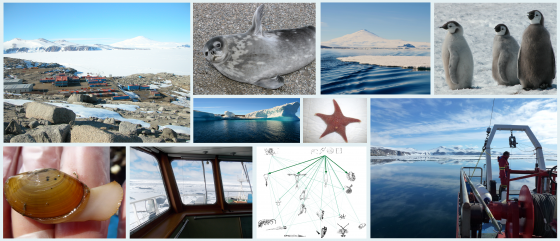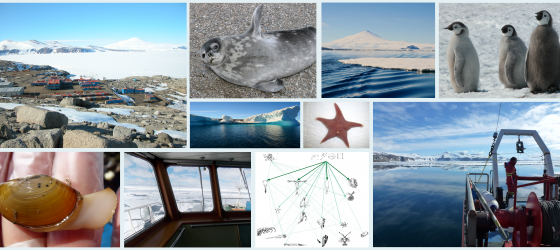Research activities in the Ross Sea and Terra Nova Bay, conducted both in situ and in Italy, have focused on coastal and pelagic ecosystems for several decades. Specifically, these studies aim to undertake a multidisciplinary investigation of ecological processes, exploring the relationships between the physical and morphological characteristics of the analyzed areas (such as water column structure, hydrodynamics, processes of sea ice formation and melting, and seabed morphology) and the biological dynamics of different trophic levels. The ongoing participation of researchers in national and international projects in the Southern Ocean has enhanced knowledge about ecological dynamics and detected potential anomalies, particularly concerning the base trophic levels (phytoplankton primary producers and organic material recycling processes), which are presumably linked to climate change phenomena. Variations in the structure of the initial levels of the food web influence all subsequent levels, such as zooplankton, nekton, and benthos.
To assess the importance of these processes on sediment characteristics, particular emphasis has been placed on the benthic community, with detailed studies related to various taxonomic macrogroups: sponges, polychaetes, mollusks, and echinoderms (community composition in terms of species diversity and biomass). For the evaluation of water column processes, the focus was on the zooplankton community (taxonomic composition and functional groups) and the main physical characteristics of the water (e.g. temperature, salinity). These analyses have recently been used to estimate the value of natural capital through food web modeling.
Through the LTER network (Macrosite IT17 - Baia Terra Nova) composed of four research sites, each characterized by the presence of a mooring aimed at different purposes (study of marine particulate matter, plankton ecology, formation and transport of water masses) - Marine Observatory of the Baia Terra Nova Protected Area, data was collected also in historical series.
A dedicated WebGIS (MACISTE ICE system-Marine Coastal Information System) was developed for the management of multidisciplinary environmental data acquired, during PNRA expeditions in the Baia Terra Nova and Ross Sea area.
In this context, DISTAV researchers carry out multiple research activities, including:
Structure and functioning of coastal communities, with particular attention to the distribution and dynamics of key species (Mariachiara Chiantore);
Relationships between environmental characteristics and the production/consumption of organic materials, their trophic characterization, and relevance to climate change-related processes(Cristina Misic);
Taxonomic characterization of planktonic community, trophic network modelling, valuation of natural capital and ecosystem services (Paolo Povero, Paolo Vassallo, Michela Castellano, Enrico Olivari, Alessandro Guida)

